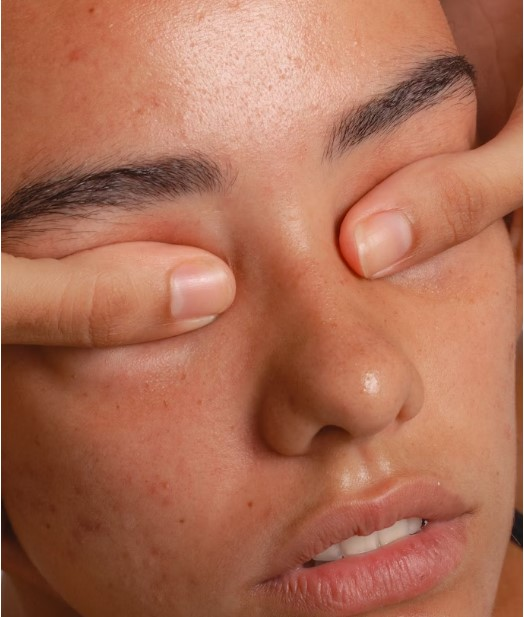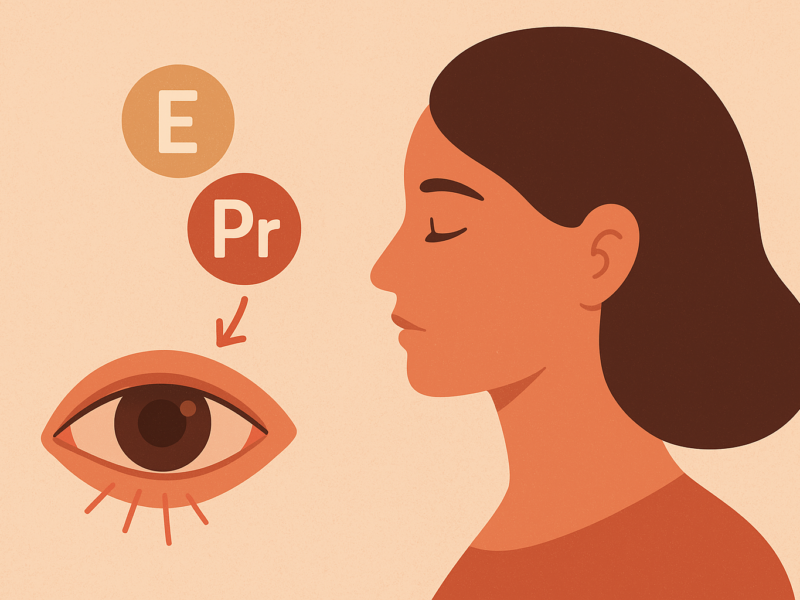🧩 Introduction
Turning 40 often brings more than a few life changes — including how your eyes perform. Many people notice that reading small print becomes harder, screens feel more tiring, or lights feel glare-ier than before. These are common, usually manageable changes, but understanding why they happen and what to do about them can make a big difference.
This comprehensive guide explores why vision changes after 40, how to recognize warning signs, and practical strategies to protect your eyesight naturally. From presbyopia and dry eyes to lifestyle, diet, and screen habits — here’s what you need to know to keep your eyes sharp and healthy for decades to come
👁️ Common Vision Changes After 40
1. Presbyopia — When Near Vision Gets Tougher
One of the first and most universal changes after 40 is presbyopia, the gradual loss of your eye’s ability to focus on nearby objects. The lens inside your eye becomes less flexible, making it harder to adjust focus for close reading or smartphone use.
Typical signs include:
- Holding reading material farther away
- Needing brighter light for close work
- Eye strain when reading for long periods
Did you know? 💡
Presbyopia affects 100% of people to some degree by their mid-40s, even if they never had vision problems before.

2. Dry Eyes and Tear Film Changes
After 40, your tear glands may produce fewer or lower-quality tears. Hormonal changes, screen time, and environmental factors (like air conditioning or smoke) make dry eyes more common.
Symptoms include:
- Burning or gritty feeling
- Blurred vision that improves with blinking
- Eye fatigue after long computer use
💧 Tip: Use preservative-free artificial tears, avoid direct airflow, and blink consciously during screen work
3. Increased Sensitivity to Light and Glare
As we age, the lens becomes denser and slightly yellow, scattering light differently. This causes glare sensitivity — especially at night.
Practical fix:
- Anti-reflective lenses
- Night-driving glasses
- Avoiding bright LED or fluorescent light
4. Early Signs of Cataracts
Cataracts are clouding of the natural lens, usually forming slowly. By age 60, more than half of adults show early signs.
Watch for:
- Cloudy or faded vision
- Difficulty seeing at night
- Colors appearing duller
5. Risk of Glaucoma and Macular Degeneration
After 40, eye pressure and retinal health become key risk areas. Glaucoma can develop silently, while age-related macular degeneration (AMD) affects central vision.
Action points:
- Annual comprehensive eye exams
- Control blood pressure & cholesterol
- Maintain omega-3 intake
🧬 Why These Changes Happen (The Science Behind Aging Eyes)
Your eyes rely on a delicate balance between the lens, retina, cornea, and tear film. Over time, oxidative stress, UV exposure, and reduced blood circulation contribute to cellular damage.
Key biological factors:
- Lens stiffening: Less flexibility reduces near focusing (presbyopia).
- Tear gland decline: Causes dryness and irritation.
- Retinal thinning: Affects night and peripheral vision.
- Decreased photoreceptor sensitivity: Leads to slower light adaptation.
⚠️ Symptoms You Shouldn’t Ignore
While gradual changes are normal, certain warning signs may point to serious conditions:
| Symptom | Possible Cause |
|---|---|
| Sudden flashes or floaters | Retinal tear/detachment |
| Loss of side vision | Glaucoma |
| Straight lines appearing wavy | Macular degeneration |
| Persistent redness or pain | Infection or inflammation |
| Shadow in vision | Retinal detachment |
➡️ If any of these occur, see an ophthalmologist immediately.
🌱 Lifestyle Steps to Protect Vision After 40
🥦 Nutrition and Supplements
Your diet has a profound impact on long-term vision health. Nutrients like lutein, zeaxanthin, vitamin A, zinc, and omega-3 fatty acids protect retinal cells and reduce oxidative stress.
Vision-boosting foods:
- Leafy greens (kale, spinach)
- Carrots & sweet potatoes
- Salmon, sardines, flaxseed
- Eggs & nuts
Recommended supplements:
- Lutein + Zeaxanthin (10–20 mg daily)
- Omega-3 (1,000 mg DHA/EPA)
- Vitamin D (supports tear gland health)
Related Articles
💤 Prioritize Sleep
Sleep is essential for repairing eye tissues and balancing tear film. Lack of rest leads to twitching, dryness, and blurred vision.
Try this nightly routine:
- Reduce screen exposure 1 hour before bed
- Keep bedroom dark and cool
- Use blue-light filters after sunset
💧 Stay Hydrated
Dehydration worsens dry eyes and fatigue. Aim for 2–2.5L of water daily and add humidifiers in dry climates.

🧘♀️ Eye Exercises and Relaxation
Eye yoga and simple focusing drills can maintain flexibility and reduce fatigue.
Examples:
- 20-20-20 Rule: Every 20 minutes, look 20 feet away for 20 seconds.
- Figure-8 focusing: trace an imaginary 8 with your eyes.
- Palming: cover eyes gently with warm palms to relax optic nerves.
🩺 Medical Treatments and When to See a Doctor
Corrective Eyewear
- Progressive lenses: Seamlessly combine near and distance vision.
- Blue light filters: Reduce strain during screen work.
- Contact lenses for presbyopia: Multifocal or monovision designs.
Surgical Options
- LASIK or PRK: reshape cornea for distance and reading clarity.
- Lens replacement surgery: replaces aging lens (used for advanced presbyopia).
- Cataract surgery: 99% success rate for restoring clarity.
🗓️ A Practical 30-Day Eye Care Plan for People in Their 40s
| Week | Focus | Action |
|---|---|---|
| Week 1 | Awareness | Book comprehensive eye exam, start hydration log |
| Week 2 | Nutrition | Add daily spinach + salmon or flaxseed |
| Week 3 | Sleep & Detox | Limit blue light, 7–8h quality sleep |
| Week 4 | Exercises | Practice 20-20-20 and palming twice daily |
Frequently Asked Questions
Can vision changes after 40 be reversed?
While aging itself cannot be reversed, proper care, nutrition, and regular checkups can slow progression and preserve visual sharpness.
Are reading glasses the only option for presbyopia?
No, contact lenses, progressive lenses, and lens replacement surgeries can also correct presbyopia effectively.
When should I start getting regular eye exams?
From age 40 onward, schedule a comprehensive eye exam every 1–2 years to detect glaucoma, cataracts, or macular degeneration early.
🧾 Key Takeaway
Turning 40 doesn’t mean losing your eyesight — it’s an opportunity to start caring for it more consciously. By understanding the biological shifts, fueling your eyes with nutrients, optimizing sleep, and keeping up with regular eye exams, you can maintain sharp, comfortable, and youthful vision well into your 60s and beyond.



